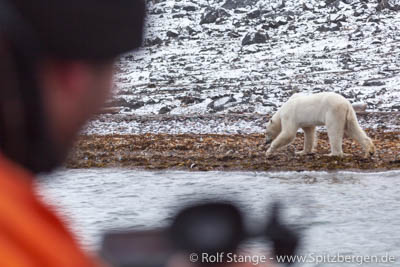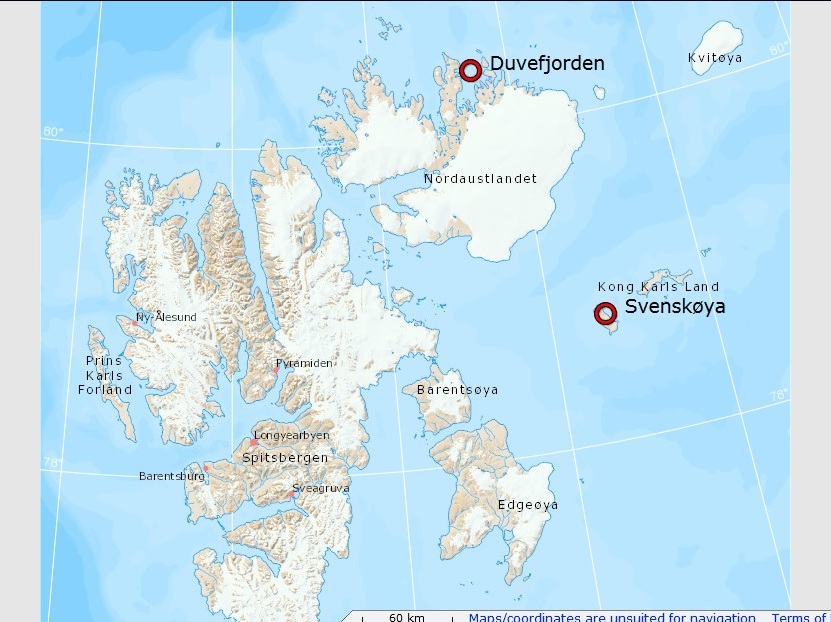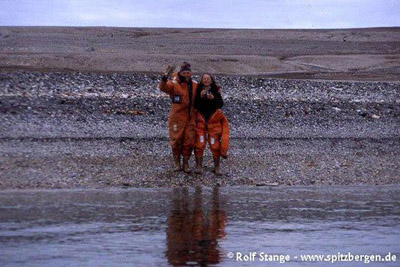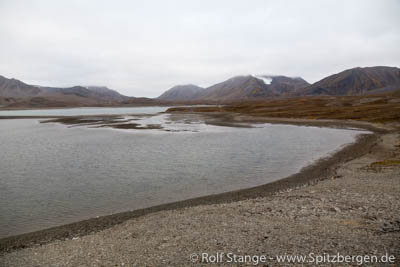-
current
recommendations- Liefdefjord
New page dedicated to one of Spitsbergen's most beautiful fjords. Background information and many photos.
- New Spitsbergen guidebook
The new edition of my Spitsbergen guidebook is out and available now!
- Liefdefjord
New page dedicated to one of Spitsbergen's most beautiful fjords. Background information and many photos.
Page Structure
-
Spitsbergen-News
- Select Month
- June 2025
- May 2025
- April 2025
- March 2025
- February 2025
- January 2025
- December 2024
- November 2024
- October 2024
- September 2024
- August 2024
- July 2024
- June 2024
- May 2024
- April 2024
- March 2024
- February 2024
- January 2024
- December 2023
- November 2023
- October 2023
- September 2023
- August 2023
- July 2023
- June 2023
- May 2023
- April 2023
- March 2023
- February 2023
- January 2023
- December 2022
- November 2022
- October 2022
- September 2022
- August 2022
- July 2022
- June 2022
- May 2022
- April 2022
- March 2022
- February 2022
- January 2022
- December 2021
- November 2021
- October 2021
- September 2021
- August 2021
- July 2021
- June 2021
- May 2021
- April 2021
- March 2021
- February 2021
- January 2021
- December 2020
- November 2020
- October 2020
- September 2020
- August 2020
- July 2020
- June 2020
- May 2020
- April 2020
- March 2020
- February 2020
- January 2020
- December 2019
- November 2019
- October 2019
- September 2019
- August 2019
- July 2019
- June 2019
- May 2019
- April 2019
- March 2019
- February 2019
- January 2019
- December 2018
- November 2018
- October 2018
- September 2018
- August 2018
- July 2018
- June 2018
- May 2018
- April 2018
- March 2018
- February 2018
- January 2018
- December 2017
- November 2017
- October 2017
- September 2017
- August 2017
- July 2017
- June 2017
- May 2017
- April 2017
- March 2017
- February 2017
- January 2017
- December 2016
- November 2016
- October 2016
- September 2016
- August 2016
- July 2016
- June 2016
- May 2016
- April 2016
- March 2016
- February 2016
- January 2016
- December 2015
- November 2015
- October 2015
- September 2015
- August 2015
- July 2015
- June 2015
- May 2015
- April 2015
- March 2015
- February 2015
- January 2015
- December 2014
- November 2014
- October 2014
- September 2014
- August 2014
- July 2014
- June 2014
- May 2014
- April 2014
- March 2014
- February 2014
- January 2014
- December 2013
- November 2013
- October 2013
- September 2013
- August 2013
- July 2013
- June 2013
- May 2013
- April 2013
- March 2013
- February 2013
- January 2013
- December 2012
- November 2012
- October 2012
- September 2012
- August 2012
- July 2012
- June 2012
- May 2012
- April 2012
- March 2012
- February 2012
- January 2012
- December 2011
- November 2011
- October 2011
- September 2011
- August 2011
- May 2011
- April 2011
- March 2011
- February 2011
- January 2011
- December 2010
- November 2010
- September 2010
- August 2010
- July 2010
- June 2010
- May 2010
- April 2010
- March 2010
- February 2010
- November 2009
- October 2009
- August 2009
- July 2009
- June 2009
- May 2009
- April 2009
- March 2009
- February 2009
- January 2009
- December 2008
- November 2008
- October 2008
- August 2008
- July 2008
- June 2008
- May 2008
- April 2008
- March 2008
- February 2008
- April 2000
- Select Month
-
weather information
-
Newsletter

| Guidebook: Spitsbergen-Svalbard |
Home
→ December, 2016
Monthly Archives: December 2016 − News & Stories
Evacuation of Nybyen lifted
Yesterday’s evacuation of Longyearbyen’s upper area Nybyen is lifted. Also the road between the school and Nybyen is open again.
Sysselmannen and other authorities (NVE) have investigated the snow on the slopes above Nybyen and other parts of Longyearbyen which are potentially exposed to avalanches. It is currently officially considered that there is no risk of major avalanches that might hit buildings.
There are no reports about major damage from last night’s storm including avalanches. A post box was blown away and a dog was covered by snow in the dogyard, but it was found and dug out in good condition.
The Sysselmannen reminds everybody that the avalanche risk for Longyearbyens surroundings is still considered high and to be accordingly careful with any outside activities.
Longyearbyen’s upper area Nybyen: the recent evacuation because of avalanche risk is lifted.
Source: Sysselmannen
Avalanche danger: Nybyen evacuated
The weather forecast for Longyearbyen says strong wind increasing to full storm during the night to Thursday, combined with strong snowfall. This weather situation means an increased risk of snow avalanches. The current avalanche warning is level 4 on a scale of 5 levels. As a consequence, the Sysselmannen has decided to evacuate Nybyen.
Smaller snow avalanches on the slopes surrounding Longyearbyen are exepcted, but so far no major events that may cause damage damage to buildings. Nybyen, Longyearbyen’s upper part, is faced with the greatest risk, hence the precautionary evacuation. Nybyen is mainly used for student housing and guest houses, but there are also a few flats where locals live. Most students are currently at home elsewhere and not in Longyearbyen. The road to Nybyen is closed from the school. It is strongly advised to resign from any field trips.
Other parts of Longyearben are currently not concerned by evacuations. This includes the residential area near Sukkertoppen, which was hit by an avalanche in December 2015 with lethal consequences. The development will be constantly monitored by the Sysselmannen and relevant institutions.
Longyearbyen during the polar night. The steep slopes surrounding the settlement can produce avalanches.
Source: Sysselmannen
No Christmas gifts? Maybe it’s the reindeer…
If Santa Claus does not bring gifts on Saturday, that could also be due to his reindeer. Whether they can pull the sledge heavily packed with gifts is questionable. Because the reindeer on Spitzbergen are getting thinner!
The subspecies – the Svalbard reindeer – is already somewhat smaller than their relatives on the mainland. 135 animals were weighed by the researcher Steve “Mister Reindeer” Albon from the James Hutton Institute in Scotland since 1994 every year in April. Rudolph Normalrentier lost seven kilos during this period. Reason is that the animals find less to eat in winter.
Hungry: Svalbard reindeer
And who is to blame? Most likely once again climate change. Because of higher average temperatures it rains on Svalbard more often than it snows. The rain freezes and forms an ice layer on top of the snow. This makes it more difficult for the reindeer to come to the lichens, of which they mainly live in the winter.
Nevertheless, this does not seem to affect the population: Since the 1990s, the number of Svalbard reindeer has risen from 800 to 1400 in the Adventdalen. What actually sounds like good news could lead to a famine among the reindeer in the long term as the competition for food increases.
We keep our fingers crossed for Santa Claus and his reindeer, and in any case wish everybody a Merry Christmas!
Sources: TV2, Dagens Næringsliv
Head of northpole expedition “Arktika 2.0” must go to court
A french skipper, who is accused of having violated several of the strict requirements for the protection of the environment on Svalbard, is to pay a fine of 25,000 crowns (€ 2750). The two French adventurers Gilles and Alexia Elkaim were actually on the way to the North Pole in September and October this year, but had to reverse due to bad weather conditions.
The fact that they sought protection from a storm in one of the most severely protected areas of Svalbard with their sailor “Arktika” could now be their doom. The 56-year-old skipper does not want to pay the penalty. The case will then be heard before the District Court (Tingrett) Nord-Troms on February 23rd and 24th.
The adventurers are accused of having anchored in the area around Kong Karls Land in the east of Svalbard within the protection zone for three days, and having entered the island of Svenskøya with their seven huskies. Svenskøya is subject to rigorous rules of protection: it is forbidden to approach the island more than 500 meters, and entering is forbidden all year round. The skipper is also supposed to have illegally imported his dogs to Svalbard and to not have approved permission for his expedition. In large parts of Svalbard, there is a requirement for individual tourists.
Polar bear in the Duvefjorden, where the French expedition anchored. The Duvefjord is located in the Nordaust-Svalbard Nature Reserve and is also protected as a scientific reference area.
Often such disputes are a question of the point of view. Gilles Elkaim describes the case on 23rd November from his perspective on his Facebook page: he asked the Sysselmannen for authorization to overwinter on October 8th, but did not receive a response for days. Elkaim claims also to have requested for permission to import the dogs already in July – without reaction. The “Arktika” had considerable problems with the engine and a water pump at the beginning of October and could therefore not continue. He wanted to get the ship safe from an emergency. To get the boat out of the protected area, the Sysselmanns decided to tow the “Arktika” and the crew to Longyearbyen on October 13th. An action with consequences. The expedition has been terminated.
In the Duvefjorden and on the Svenskøya anchored the Arctic before being towed to Longyearbyen.
Homepage of the expedition
Source: Svalbardposten, iFinnmark.no
Hauke Trinks is dead
Hauke Trinks was not only a scientist, but also a Spitsbergen adventurer. He wintered three times in remote places northern Svalbard. Born on Februar 19, 1943 in Berlin, he became president of the Technical University in Hamburg-Harburg. After finishing his scientific career, he had more time for his passions, sailing and adventure.
In 1999-2000, Hauke Trinks wintered on his own on his yacht Mesuf in Mushamna in Woodfjord. As a scientist, he wanted to find evidence for his theory of an origin of life in the ice. Two more winterings followed, in 2003-2004 in the old station in Kinnvika on Nordaustland and in 2010-2011 once again on his boat in Mushamna. On these two later winterings, he was accompanied by Marie Tiéche. Hauke Trinks told his arctic adventure stories in several books and documentations to a wider public. There has hardly been a visit to Woodfjord since without the question coming up: “isn’t it somehwere around here where Hauke Trinks wintered?”
It is up to dedicated scientists to judge his efforts and results as a reseracher. Opinions regarding this may be varied, but that does not matter now and here. As a person, Hauke Trinks easily felt at home in Spitsbergen, something that was very evident during several meetings this author had with Trinks in Mushamna, Kinnvika and Longyearbyen. To share just one of these unforgettable moments: when we approached Kinnvika with MV Professor Multanovskiy in the late summer of 2003, when Hauke and Marie were just settling down there for there wintering, they quickly jumped into their Zodiac and took off to disappear deep in Murchisonfjord as they saw us coming. But as we were about to leave, they returned quickly and Hauke, being a good narrator, was happy to share stories and knowledge with us.
Hauke Trinks kept a strong connection to the north and settled down in his new second home on Utsira in Norway. He died in December 2016 at the age of 73 in Spitsbergen or on Utsira, the sources are not yet quite clear about this. We will keep fond memories of him as one of few adventurers who, in recent years, ventured on month-long expeditions on his own or with just one more person into the polar night and the ice, following a scientific quest, and as a unique, very likeable character.
Hauke Trinks and Marie Tièche in Kinnvika, 2003.
Sources: Press release Technische Universität Hamburg-Harburg, Hamburger Abendblatt
The avalanche risk report for Longyearbyen has been published
The avalanche risk report for Longyearbyen is now available. After the deadly avalanche on December 19, 2015 and the precautionary evacuations in early November 2016, the report has been awaited with eagerness. It was compiled by NVE (Norges vassdrags- og energidirektorat, Norwegian directorate for waters and energy within the ministry for oil and energy) and it is based on maps and aerial photography, terrain modeling, climate analysis, historical experience, on-site investigations and computer modeling.
For the public, the results are more relevant than the methodical background. The report includes a map that shows endangered areas in three colours. The areas where damage caused by avalanches happens with a likelihood of 1:5000 per year is marked in yellow. In other words: damage caused by an avalanche has to be expected every 5000 years – statistically, that is.
Areas marked orange have an annual risk of 1:000 or avalanche damage every 1000 years. And then there are the red areas, where an avalanche has to be expected once per century. The risk of a devastating event is one per cent every year.
This risk assessment includes snow and slush avalanches, mudslides and rockfalls. Some parts of Longyearbyen are “only” exposed to particular hazards within this list. This can mean that different areas may be exposed to danger at different seasons or in different weather situations.
A first look at the avalanche risk map makes the viewer take a breath. No less than 154 flats as well as two guest houses are inside the red zone. These addresses are faced with an annual risk of 1:100 of a potentially catastrophic event, causing great damage and putting life at risk.
The obvious question is how Longyearbyen will deal with this situation. it is clear that the option to move all the houses concerned quickly to safe areas is not available. That will neither technically nor politically and financially be possible, and there is the issue of space being available in sufficient quantities in Longyearbyen (remember, it is a valley, and there are rivers, slopes and a fjord not far from wherever you are). As a result, the houses will remain wherever they are at least for quite a while.
Longyearbyen will obviously be developed in areas that are not endangered, making sure as much housing as possible will be available in these areas in the future. Securing dangerous slopes with technical will also be discussed.
For the time being, there is no other option but keeping the avalanche warning system upright and evacuate endangered addresses in risk situations.
It was emphasized that there is a number of communities in Norway who are in similar situations. In the end, it is normality in a mountain and winter country such as Norway, and communities will naturally have to deal with that. This has recently been ignored in Longyearbyen. A high price was paid in December 2015.
It can be taken for granted that politicians from the local administration (Lokalstyre) in Longyearbyen to relevant departments in Oslo have got some homework to do. Meanwhile, inhabitants of many houses in Longyearbyen will have to live with temporary evacuations on a short warning during avalanche risk weather.
Avalanche risk map for Longyearbyen (NVE).
Direct link to the avalanche report and direct link to the avalanche risk map.
Sources: Sysselmannen, Svalbardposten
Polar bear shot on Prins Karls Forland: fine for the shooter
A polar bear was shot by a Russian scientist on August 09 on Prins Karls Forland (see Polar bear shot on Prins Karls Forland). The circumstances seemed doubtful: it appears that no serious attempt had been made to scare the polar bear away with non-lethal methods and the lethal shot was fired at a very early stage of the encounter from the large distance of 130 (!) metres. Additionally, the authorities were only informed about the incident the following day and not immediately, as required.
It was a two year old female, weighing 155 kg. The animal had been marked before.
The case was handed over by the Sysselmannen in Longyearbyen to the public prosecutor in Tromsø. The reason may have been the juridical and public character of the case. When considering the sparse information that is available, one may quickly be tempted to conclude that the killing may have been a criminal offense.
Now the verdict from Tromsø is there: the scientist who had fired the deadly shot is condemned to pay a fine of NOK 15000,- (ca. 1670 Euro). The man has accepted the fine, hence the verdict is effective.
Charges against the other three persons who were in the camp together with the shooter have been dismissed.
The bay Selvågen a few days before the polar bear was shot on August 09.
Source: Sysselmannen
News-Listing live generated at 2025/June/15 at 07:17:32 Uhr (GMT+1)




































